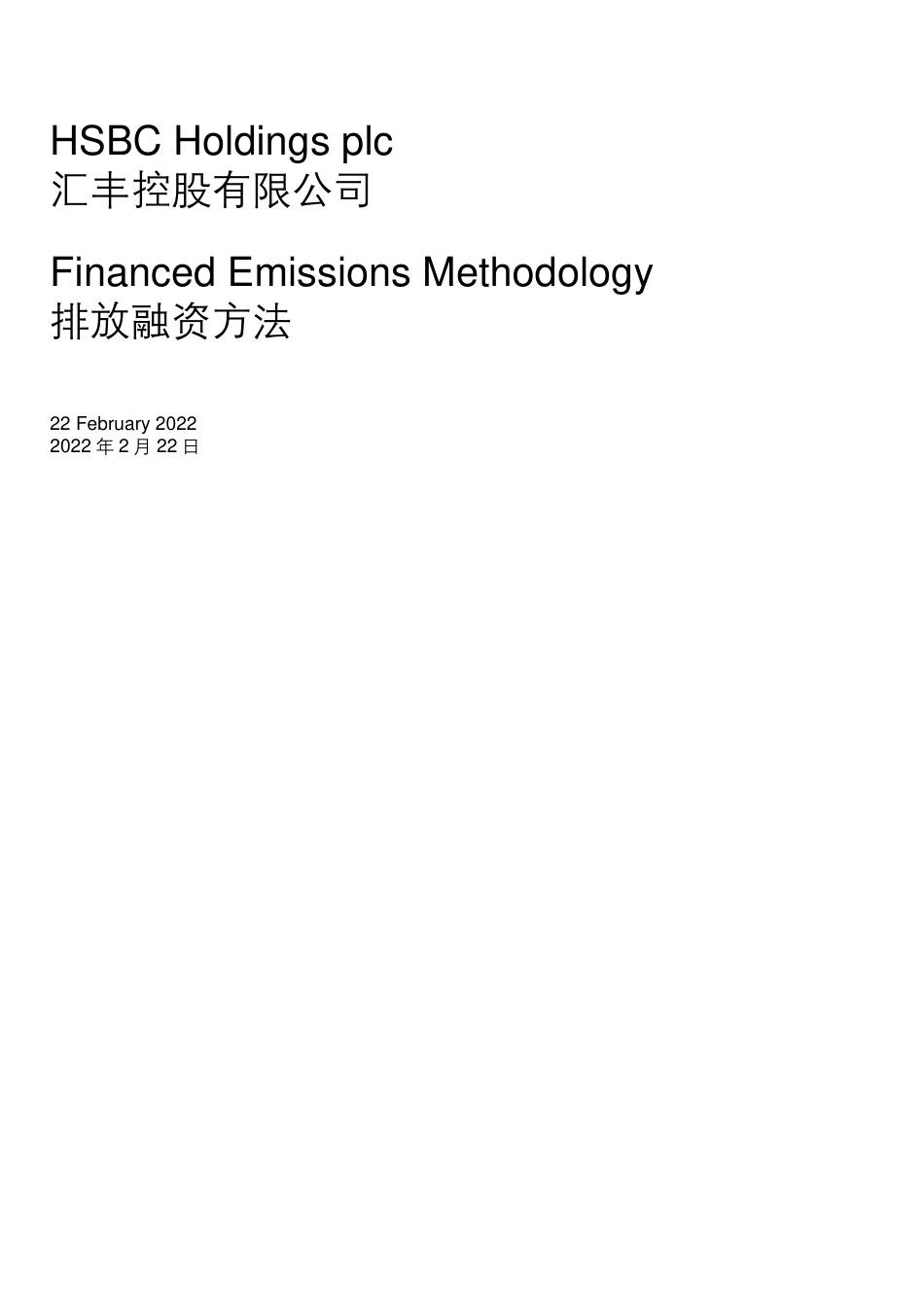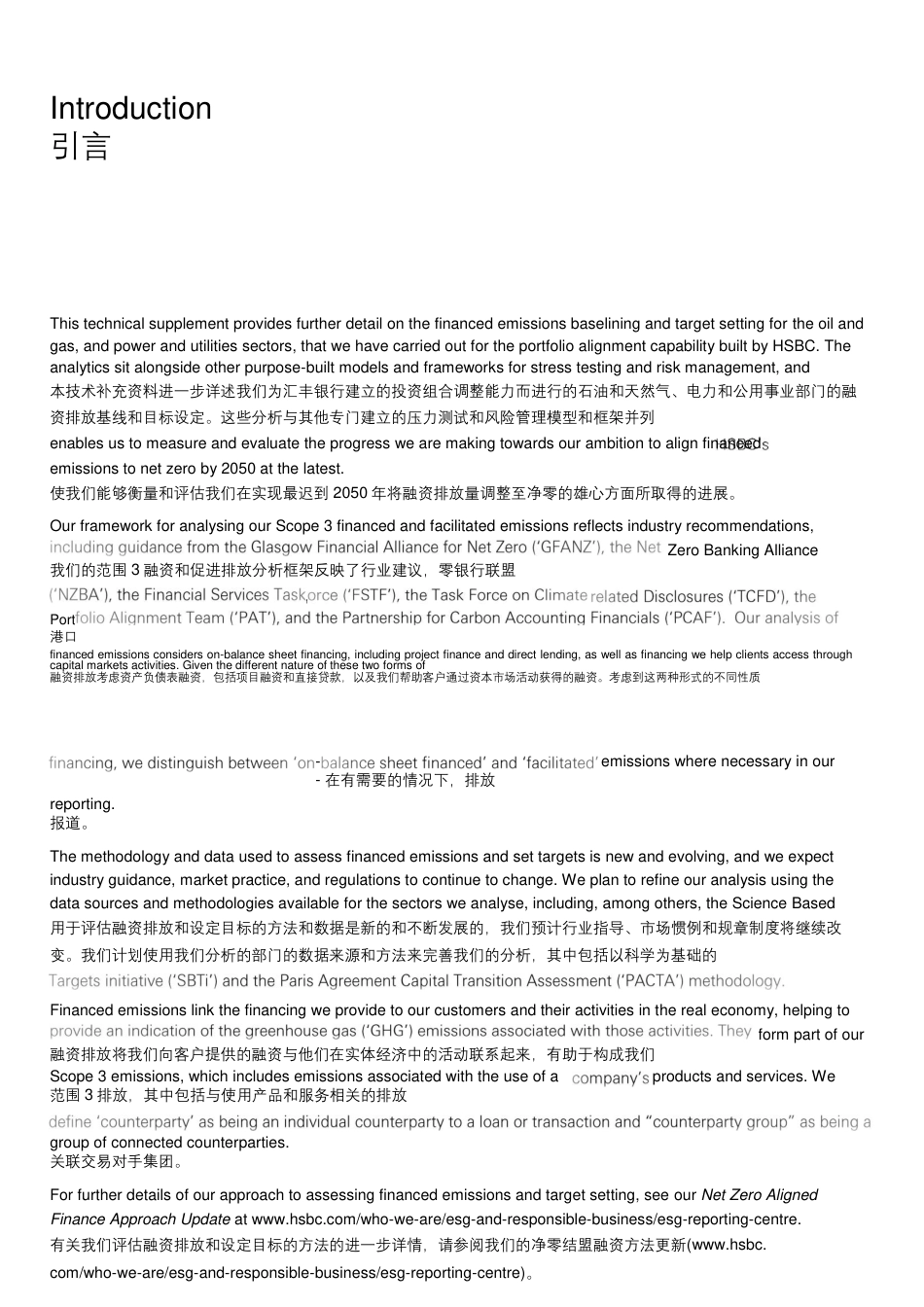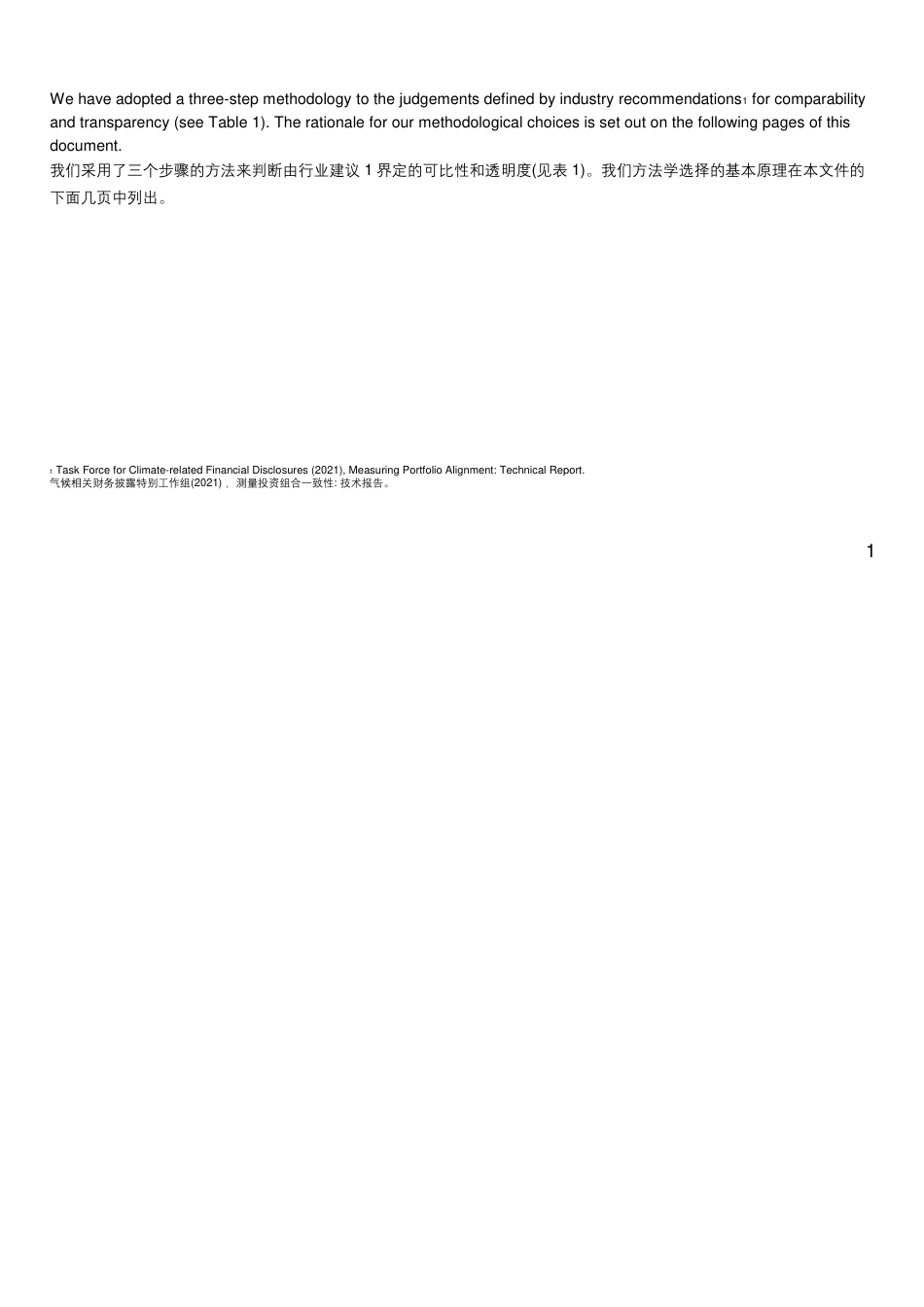HSBC Holdings plc 汇丰控股有限公司 Financed Emissions Methodology 排放融资方法 22 February 2022 2022 年 2 月 22 日 Introduction 引言 This technical supplement provides further detail on the financed emissions baselining and target setting for the oil and gas, and power and utilities sectors, that we have carried out for the portfolio alignment capability built by HSBC. The analytics sit alongside other purpose-built models and frameworks for stress testing and risk management, and 本技术补充资料进一步详述我们为汇丰银行建立的投资组合调整能力而进行的石油和天然气、电力和公用事业部门的融资排放基线和目标设定。这些分析与其他专门建立的压力测试和风险管理模型和框架并列 enables us to measure and evaluate the progress we are making towards our ambition to align financed emissions to net zero by 2050 at the latest. 使我们能够衡量和评估我们在实现最迟到 2050 年将融资排放量调整至净零的雄心方面所取得的进展。 Our framework for analysing our Scope 3 financed and facilitated emissions reflects industry recommendations, Zero Banking Alliance 我们的范围 3 融资和促进排放分析框架反映了行业建议,零银行联盟 f - Port 港口 financed emissions considers on-balance sheet financing, including project finance and direct lending, as well as financing we help clients access through capital markets activities. Given the different nature of these two forms of 融资排放考虑资产负债表融资,包括项目融资和直接贷款,以及我们帮助客户通过资本市场活动获得的融资。考虑到这两种形式的不同性质 - emissions where necessary in our - 在有需要的情况下,排放 reporting. 报道。 The methodology and data used to assess financed emissions and set targets is new and evolving, and we expect industry guidance, market practice, and regulations to continue to change. We plan to refine our analysis using the data sources an...



